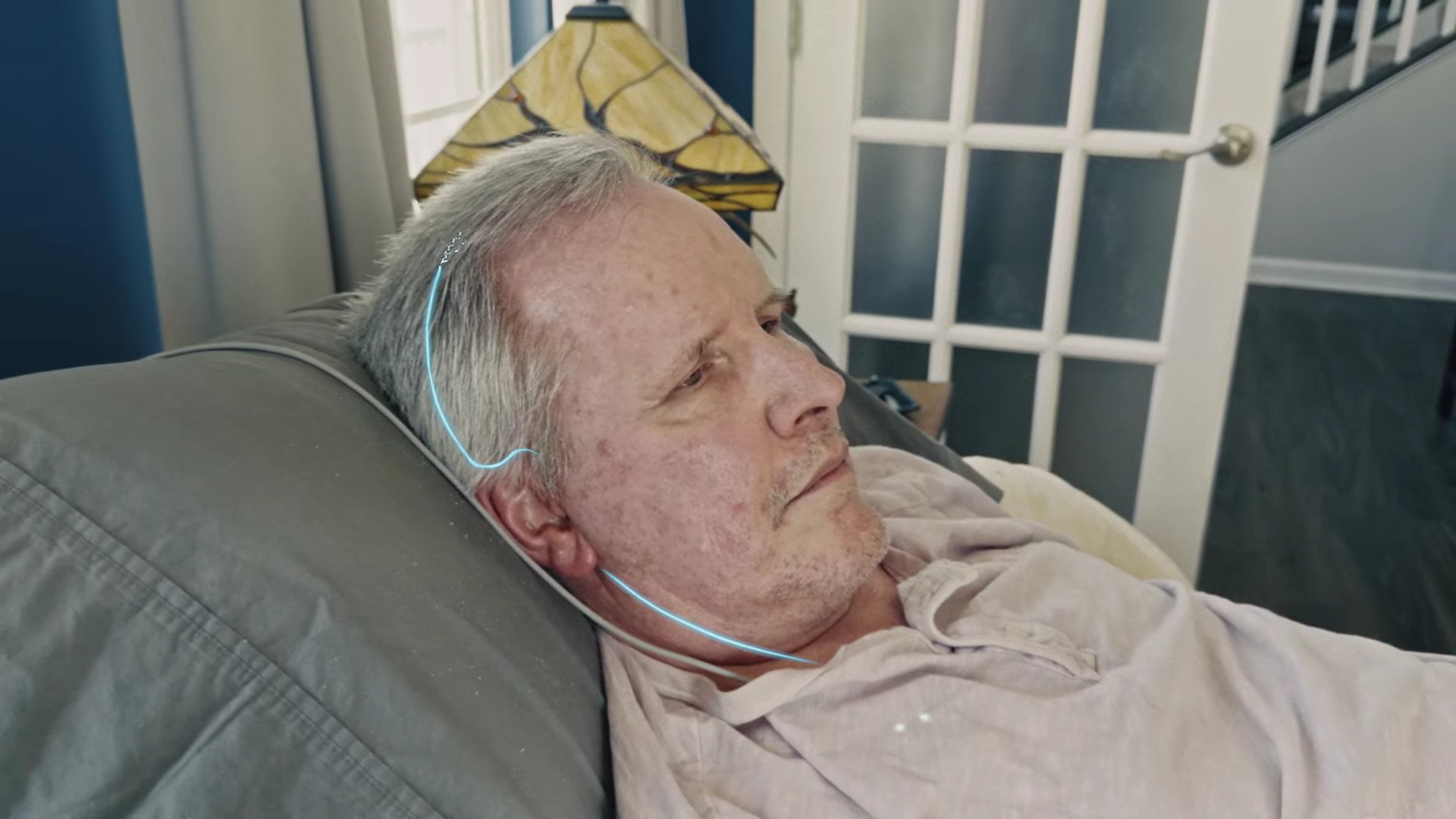
Editor
Celine Low chevron_right
We've all seen mind control and telekinesis in science fiction films, but now it's becoming a reality.
In a public demonstration, NYC-based medical device company Synchron shared a video of how their brain implant helped a patient named Mark Jackson control an iPad with nothing but his thoughts. Jackson lives with ALS, a nervous system disease that causes muscle loss. He wasn't able to use his hands to swipe, tap, or do anything on his device.
And one day in 2023, he was implanted with the Stentrode, an endovascular electrode array that records or stimulates one's brain from inside the blood vessels.
The Implant Works With Apple Products, How Does It Work?
Stentrode is implanted into a blood vessel in the brain, without needing an open-brain surgery. The Stentrode is placed over the brain's motor cortex, where it can detect the electrical signals associated with a person's thoughts of action.
This technology allows Jackson's thoughts to be translated into digital actions on his iPad. He can navigate apps, send text messages, and read through the news on his iPad without needing to use his hands, eyes, or voice.

Apple has collaborated with Synchron to make this special brain implant work. The system uses Apple's existing accessibility feature, Switch Control. The signals from the Stentrode are sent wirelessly to an external decoder, which then tells the Apple device what to do, acting just like a series of switches controlled by a person's thoughts.
Apple has made its devices compatible with these brain-computer interfaces (BCIs) through a new protocol. This allows an iPhone, iPad, or even the Vision Pro to recognise the implant as a standard input device, just as it would recognise a keyboard or a mouse via Bluetooth.
Tech Accessibility For Everyone
This innovation is a huge leap forward in accessibility and independence for people with severe motor disabilities.
Jackson, who was part of Synchron's first FDA-approved clinical trial dubbed COMMAND, feels a newfound sense of empowerment with this
“When I lost the use of my hands, I thought I had lost my independence,” Jackson shared. “Now, with my iPad, I can message my loved ones, read the news, and stay connected with the world, just by thinking. It's given me part of my life back.”
This powerful message highlights the real-world significance of this breakthrough. The fact that the technology is designed to work with familiar, everyday devices like the iPad makes it even more impactful, as it allows users to connect with a world of apps and services they already know.
Synchron's non-surgical approach has now been tested in 10 patients in the United States and Australia, paving the way for a safer, more accessible future.
Watch the full video here:
Stay updated with ProductNation on here, Instagram & TikTok as well.
Read more related news here:
